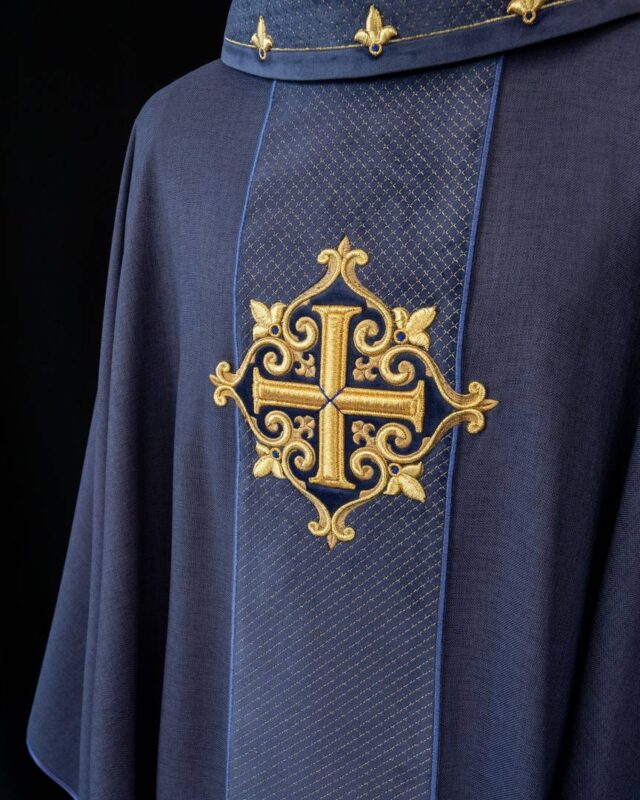The rise in popularity of tattoos in modern times can be attributed to several influential figures who have helped shape and promote this form of body art. From tattoo artists who revolutionized the industry to cultural icons who proudly displayed their ink, these individuals have played a significant role in popularizing tattoos. In this article, we will explore some of the key figures who have contributed to the widespread acceptance and appreciation of tattoos in contemporary society.
- Don Ed Hardy:
Don Ed Hardy is a renowned American tattoo artist and a pivotal figure in the popularization of tattoos. With his exceptional artistic skills and unique style, Hardy gained prominence in the 1970s and 1980s. He blended traditional tattoo motifs with elements from Japanese and American pop culture, creating a distinct and highly sought-after aesthetic. Hardy’s innovative designs and collaborations with fashion brands brought tattoos into the mainstream, introducing a wider audience to the art form. - Kat Von D:
Kat Von D, born Katherine von Drachenberg, is an influential tattoo artist, entrepreneur, and television personality. She gained international fame through her appearances on the reality TV show “Miami Ink” and later starred in her spin-off series, “LA Ink. ” Von D’s talent, charismatic personality, and bold style helped bring tattoos to the forefront of popular culture. Her success as a public figure and the subsequent launch of her own makeup and tattoo product line further cemented her impact on the tattoo industry. - Ami James:
Ami James, an Israeli-born tattoo artist, is widely recognized for his role in co-founding the tattoo studio “Miami Ink” and his appearances on the reality TV show of the same name. James’ expertise, combined with his captivating presence, contributed to the increased visibility and mainstream acceptance of tattoos. As a result, his work and collaborations with other renowned artists helped make tattoos more accessible and appealing to a broader audience. - Rihanna:
As a globally recognized pop star and trendsetter, Rihanna has significantly influenced popular culture, including the perception of tattoos. With her extensive collection of ink, Rihanna has normalized and celebrated body art, inspiring many of her fans to embrace tattoos as a form of self-expression. Her bold and diverse tattoo designs, frequently showcased in public appearances and music videos, have undoubtedly contributed to the growing acceptance and popularity of tattoos in modern times. - The Beckham Family:
The Beckham family, particularly David and Victoria Beckham, have played a significant role in popularizing tattoos in mainstream society. Both David and Victoria sport an extensive array of tattoos, often showcased during public events and in fashion campaigns. As style icons and influential figures, their prominent display of tattoos has helped break down stereotypes and influenced countless individuals to view tattoos as a form of personal expression and art.

What are the cultural and societal factors that contributed to the rise of tattoos?
In recent years, tattoos have experienced a remarkable resurgence in popularity, becoming increasingly prevalent in contemporary society. This cultural phenomenon can be attributed to a convergence of various cultural and societal factors that have contributed to the rise of tattoos as a mainstream form of self-expression. In this article, we will delve into the underlying dynamics and explore the intricate relationship between tattoos and the cultural and societal landscape. One significant factor that has fueled the ascent of tattoos is the shift in societal perceptions and attitudes towards body art.
Historically, tattoos were often associated with marginalized groups, such as sailors, prisoners, and bikers. These stigmatized associations rendered tattoos taboo and restricted their acceptance within mainstream culture. However, with the gradual evolution of societal norms and the breakdown of traditional taboos, tattoos have transcended their negative connotations and have emerged as a legitimate form of artistic expression. Moreover, the influence of popular culture, including music, film, and fashion, cannot be understated when considering the rise of tattoos. Celebrities, musicians, and athletes have played a pivotal role in popularizing tattoos and shaping their appeal. Icons like David Beckham, Rihanna, and Angelina Jolie have proudly showcased their extensive tattoo collections, thereby normalizing tattoos and inspiring countless individuals to follow suit. Additionally, tattoos have become an integral part of various subcultures, such as the punk, rock, and hip-hop communities, where body art serves as a means of identity formation and rebellion against mainstream conventions. Cultural diversity and globalization have also significantly contributed to the popularity of tattoos. As societies become more interconnected and borders become increasingly permeable, the exchange of cultural ideas and practices has become more prevalent. Tattoo traditions from different cultures and civilizations, such as Polynesian tribal tattoos, Maori moko, and Japanese irezumi, have gained global recognition and have been incorporated into contemporary tattoo designs. This cross-cultural exchange has not only broadened the artistic possibilities but has also enhanced the cultural significance associated with tattoos. Additionally, advancements in tattooing techniques and technology have played a pivotal role in the tattoo renaissance.
The advent of modern tattoo machines, sterilization methods, and high-quality pigments has revolutionized the industry, making tattoos safer, more precise, and visually striking. These technical advancements have attracted a broader audience, including individuals who may have been hesitant to get tattoos due to concerns about hygiene, pain, or long-term aesthetic appeal. Furthermore, the growing acceptance of tattoos within professional environments has further propelled their popularity. In the past, visible tattoos were often perceived as unprofessional and could hinder career prospects. However, as the workforce becomes more diverse and inclusive, many industries and employers have adopted more liberal attitudes towards visible body art. This shift has empowered individuals to express their creativity through tattoos without fearing negative repercussions in their professional lives. In conclusion, the rise of tattoos as a mainstream cultural phenomenon can be attributed to a confluence of factors. Shifting societal perceptions, the influence of popular culture, cultural diversity, technological advancements, and evolving professional norms have all contributed to the widespread acceptance and popularity of tattoos. As tattoos continue to evolve and push artistic boundaries, they remain a powerful form of self-expression, intertwining personal narratives with the broader cultural fabric of our society.

How has the perception of tattoos changed over time and what are the current trends?
The perception of tattoos has undergone a significant transformation over time, evolving from a stigmatized form of body modification to a widely accepted and celebrated art form. This shift in perception can be attributed to various factors, including cultural influences, changing societal attitudes, and advancements in tattoo technology. In this article, we will delve into the changing perception of tattoos over time and explore the current trends in the tattoo industry.
Historically, tattoos were often associated with marginalized groups, such as sailors, prisoners, and bikers, which contributed to a negative perception in many societies. Tattoos were viewed as symbols of rebellion, deviance, or criminality, and those who sported them were often judged or discriminated against. However, as cultural barriers broke down and societal norms evolved, tattoos began to emerge as a means of self-expression and personal storytelling. One significant factor that has contributed to the changing perception of tattoos is the influence of popular culture. In the late 20th century, tattoos started gaining visibility in mainstream media through movies, music, and sports. Celebrities and athletes began proudly displaying their inked bodies, which helped to normalize tattoos and break down the associated stereotypes. This increased visibility in popular culture played a crucial role in shifting public opinion towards tattoos. Advancements in tattoo technology have also played a pivotal role in changing perceptions. In the past, tattoos were often limited in design and quality due to the rudimentary tools and techniques available. However, with the advent of modern tattoo machines, pigments, and sterilization methods, tattoo artists gained more precision and creativity in their work. This led to a surge in artistic innovation, allowing tattoos to be viewed as intricate and visually captivating pieces of body art. As society became more accepting of tattoos, their popularity soared, leading to the emergence of new trends in the industry. Today, tattoos are considered a form of personal expression, with individuals using them to convey their beliefs, interests, and life experiences.
Symbolic tattoos, such as religious or spiritual symbols, continue to be popular choices for many. Additionally, nature-inspired designs, geometric patterns, and minimalist tattoos have gained traction in recent years. Another notable trend in the tattoo industry is the rise of realistic and hyper-realistic tattoos. Artists with exceptional skills in portraiture and photorealism are sought after for creating tattoos that resemble photographs or lifelike images. This trend showcases the technical prowess of tattoo artists and their ability to transform skin into a canvas for stunningly detailed artwork. In recent years, there has also been a growing interest in small, discreet tattoos. These minimalist designs are often placed in inconspicuous areas of the body, allowing individuals to express themselves without drawing excessive attention. This trend appeals to those who want the option of concealing their tattoos for professional or personal reasons. Furthermore, the acceptance and normalization of tattoos have led to an increase in tattoo enthusiasts seeking larger, more elaborate pieces. Full sleeve tattoos, back pieces, and body suits are now highly sought after, providing individuals with a way to showcase intricate and cohesive designs that span across their bodies.
In conclusion, the perception of tattoos has evolved significantly over time. From being associated with societal outcasts to being celebrated as a legitimate form of artistic expression, tattoos have come a long way. Factors such as cultural influences, changing societal attitudes, and advancements in tattoo technology have all played crucial roles in reshaping public perception. The current trends in the tattoo industry showcase a wide range of styles and designs, from symbolic and nature-inspired tattoos to hyper-realistic artwork and discreet minimalist designs. With the continued acceptance and innovation within the industry, tattoos are likely to remain a popular and evolving form of self-expression in the years to come.






















I never thought/thought about it this way. This is an eye-opener.